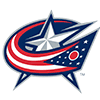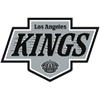Compiling my shortlist of players to consider for this column involves combing through both the biggest pieces of news over the past week as well as looking at leaderboards full of recent stats. In the early part of the year, I mostly just use season-long leaderboards, but we're now deep enough into the schedule that a player's season stats don't necessarily reflect how they're playing right now.
Splitting up an already fairly small sample (approximately 40 games) into even smaller pieces is something that should be done carefully. If you want to get the best picture of a player's true talent level, you're almost always better served by ingesting as much information as possible rather than restricting yourself to only his most recent stats.
With the help of advanced stats as well as a focus on metrics that become useful in smaller samples such as strikeout and walk rates, however, we can learn at least a few things from dividing a player's season up in this way. If a player's April deviated significantly from expectations on the surface but came with underlying numbers that suggested the change wasn't very dramatic, and he's now performing as expected in May, it's pretty safe to more or less ignore his April and assume he'll perform to his preseason expectations going forward.
The trickier situation to deal with at this point of the year is a player who really was hot or cold in ways that weren't just luck. Some players had very poor
Compiling my shortlist of players to consider for this column involves combing through both the biggest pieces of news over the past week as well as looking at leaderboards full of recent stats. In the early part of the year, I mostly just use season-long leaderboards, but we're now deep enough into the schedule that a player's season stats don't necessarily reflect how they're playing right now.
Splitting up an already fairly small sample (approximately 40 games) into even smaller pieces is something that should be done carefully. If you want to get the best picture of a player's true talent level, you're almost always better served by ingesting as much information as possible rather than restricting yourself to only his most recent stats.
With the help of advanced stats as well as a focus on metrics that become useful in smaller samples such as strikeout and walk rates, however, we can learn at least a few things from dividing a player's season up in this way. If a player's April deviated significantly from expectations on the surface but came with underlying numbers that suggested the change wasn't very dramatic, and he's now performing as expected in May, it's pretty safe to more or less ignore his April and assume he'll perform to his preseason expectations going forward.
The trickier situation to deal with at this point of the year is a player who really was hot or cold in ways that weren't just luck. Some players had very poor Aprils that don't look much better when viewed through an advanced-stats lens yet are looking like themselves in May. It can be very tempting to write off the bad month as an aberration in that case and expect him to fully revert to his expected level going forward, and in many cases, that may well be correct, especially this year, when the disrupted spring may have hit certain players particularly hard. On the other hand, he really did perform that poorly in April, which suggests he could perform that way again. Advanced stats can help us filter out luck to a large extent, but it's never going to be easy to account for genuine but temporary changes in a player's talent level.
This week's column is full of players whose recent numbers look very different from their numbers in the early part of the year. As always, I'll try to focus on players whose underlying numbers indicate they really are rising and falling rather than merely getting lucky or unlucky. But the caveat discussed above remains important. A good player performing legitimately poorly doesn't necessarily mean he's now a bad player or will definitely be bad next month as well, and a player reverting to his expected levels after a genuinely poor first month isn't guaranteed to avoid having yet another poor month in June. Still, such swings in performance are at a minimum worth keeping an eye on to determine whether they're truly representative of a new baseline talent level, even if the sample sizes are too small to say for sure just yet.
RISERS
 Ketel Marte, 2B/OF, Diamondbacks: Things didn't look good at all for Marte in his first 20 games this season. He hit .135/.207/.203 with zero homers over that stretch, striking out 24.4 percent of the time while posting a 38.2 percent hard hit rate. For a player who hasn't been particularly consistent over the course of his career, there was reason to worry that we'd get the bad version of Marte this season. In the 19 games since then, however, he's turned things around dramatically, slashing .348/.416/.580 and striking out 19.5 percent of the time while recording a 55.6 percent hard hit rate. The depths of his early struggles mean his season-long numbers still look poor, but there's reason to be optimistic that we'll get the good version of Marte the rest of the way. It's not all perfect, as that strikeout rate over his hot streak would still represent a career high, but it's nevertheless a significant step in the right direction for a player who looked like he might force some difficult drop decisions back in late April.
Ketel Marte, 2B/OF, Diamondbacks: Things didn't look good at all for Marte in his first 20 games this season. He hit .135/.207/.203 with zero homers over that stretch, striking out 24.4 percent of the time while posting a 38.2 percent hard hit rate. For a player who hasn't been particularly consistent over the course of his career, there was reason to worry that we'd get the bad version of Marte this season. In the 19 games since then, however, he's turned things around dramatically, slashing .348/.416/.580 and striking out 19.5 percent of the time while recording a 55.6 percent hard hit rate. The depths of his early struggles mean his season-long numbers still look poor, but there's reason to be optimistic that we'll get the good version of Marte the rest of the way. It's not all perfect, as that strikeout rate over his hot streak would still represent a career high, but it's nevertheless a significant step in the right direction for a player who looked like he might force some difficult drop decisions back in late April.
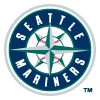 Julio Rodriguez, OF, Mariners: Rodriguez's inclusion on the Mariners' Opening Day roster was met with much fanfare, but his success in the minors didn't immediately translate into success at the highest level. In his first 25 games, he hit just .220/.283/.297 with a worryingly high 36.4 percent strikeout rate, though a handful of those strikeouts came from the fact that he'd been the victim of incorrect called strike threes at a historic clip. He's bounced back in a big way over his last 16 games, hitting .339/.379/.500 while striking out just 22.7 percent of the time. That's earned him a prime spot in the lineup, as he's now regularly hitting third or fourth. The lone bright spot during his early struggles was his willingness to use his wheels, something that has continued as his bat has started to heat up, as he now leads the league with 12 stolen bases. Speed was supposed to be part of his game, but not this kind of speed. THE BAT projection system predicted seven steals for him prior to the year but now thinks he'll finish with 27, giving him even more potential than previously expected.
Julio Rodriguez, OF, Mariners: Rodriguez's inclusion on the Mariners' Opening Day roster was met with much fanfare, but his success in the minors didn't immediately translate into success at the highest level. In his first 25 games, he hit just .220/.283/.297 with a worryingly high 36.4 percent strikeout rate, though a handful of those strikeouts came from the fact that he'd been the victim of incorrect called strike threes at a historic clip. He's bounced back in a big way over his last 16 games, hitting .339/.379/.500 while striking out just 22.7 percent of the time. That's earned him a prime spot in the lineup, as he's now regularly hitting third or fourth. The lone bright spot during his early struggles was his willingness to use his wheels, something that has continued as his bat has started to heat up, as he now leads the league with 12 stolen bases. Speed was supposed to be part of his game, but not this kind of speed. THE BAT projection system predicted seven steals for him prior to the year but now thinks he'll finish with 27, giving him even more potential than previously expected.
 Clay Holmes, RP, Yankees: Did Holmes just become the man to unseat Aroldis Chapman, one of the best closers of all time? There hasn't been an official changing of the guard at Yankee Stadium, but it looks as though he may have, at least in the immediate future. He's recorded saves in each of his last two appearances, while Chapman has given up at least one run in five straight outings. For his part, Holmes gave up a run in his first appearance of the season but hasn't allowed a single runner to cross the plate since, lowering his ERA to 0.42. That number will surely rise, but his 1.75 FIP, 1.83 xFIP and absurd 0.67 SIERA back up the idea that he's been one of the game's most dominant pitchers this season. He's gotten there in an unusual way. His 26.9 percent strikeout rate is above-average but hardly notable for a high-leverage reliever, but he's walked just 2.6 percent of opposing batters while generating grounders at an incredible 83.3 percent clip. Chapman could sort things out at any point, but Holmes is very much worth a pickup until he does.
Clay Holmes, RP, Yankees: Did Holmes just become the man to unseat Aroldis Chapman, one of the best closers of all time? There hasn't been an official changing of the guard at Yankee Stadium, but it looks as though he may have, at least in the immediate future. He's recorded saves in each of his last two appearances, while Chapman has given up at least one run in five straight outings. For his part, Holmes gave up a run in his first appearance of the season but hasn't allowed a single runner to cross the plate since, lowering his ERA to 0.42. That number will surely rise, but his 1.75 FIP, 1.83 xFIP and absurd 0.67 SIERA back up the idea that he's been one of the game's most dominant pitchers this season. He's gotten there in an unusual way. His 26.9 percent strikeout rate is above-average but hardly notable for a high-leverage reliever, but he's walked just 2.6 percent of opposing batters while generating grounders at an incredible 83.3 percent clip. Chapman could sort things out at any point, but Holmes is very much worth a pickup until he does.
 David Bednar, RP, Pirates: I was struck last week by this Tweet from Pirates beat reporter Alex Stumpf:
David Bednar, RP, Pirates: I was struck last week by this Tweet from Pirates beat reporter Alex Stumpf:
Contact rate leaders on pitches inside the strike zone. A "here it is, can you hit it" stat.
Not only is David Bednar tops among all pitchers (min. 20 IP), the percentage difference between first and second is the same as between second and 10th. pic.twitter.com/LP2qbOsEy2
— Alex Stumpf (@AlexJStumpf) May 19, 2022
Amidst a group of pitchers off to strong starts, Bednar stands out as especially unhittable. The numbers have shifted slightly since the day that leaderboard was posted, but the story is the same. Bednar has been a tier above everyone else in terms of getting swings and misses on pitches inside the zone. When you're able to get those sorts of whiffs, you don't need to leave the zone very often, as Bednar's 4.1 percent walk rate on the year attests. Combine that mark with his 37.8 percent strikeout rate, and you get one of the most dominant relievers thus far this year. By K-BB percentage, he's the second-best pitcher in the league among those who have thrown at least 20 innings, so it's hardly a surprise to see his 0.87 ERA. That mark will rise along with his .195 BABIP, but his 2.08 FIP and 2.23 xFIP suggest it won't rise all that much. The Pirates were supposed to deploy a closer committee this year, but Bednar has been so dominant that there's been no need, as he's recorded eight of the team's 11 saves.
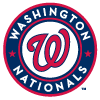 Keibert Ruiz, C, Nationals: I loved Ruiz during draft season due to his past pedigree as a prospect and his rare contact ability. His 9.4 percent strikeout rate in 96 plate appearances last season was elite for anyone, let alone a 22-year-old catcher. It came with a poor 2.5 percent barrel rate, but his 21 homers in 72 Triple-A games suggested that there could still be power to tap into. Signs of meaningful pop haven't really been there this season, as he's barreled just 3.8 percent of his batted balls while homering just once, but his contact skills have indeed been as advertised. The results weren't there despite an 11.4 percent strikeout rate in April, a month in which he hit just .239/.257/.299, but his turnaround in May has been remarkable. He's cut his strikeout rate even further to 9.8 percent and has demonstrated excellent control of the zone with his 14.8 percent walk rate, leading to a .353/.459/.510 slash line. You're just not going to find many catchers who provide both power and average, so finding one like Ruiz who's particularly strong in one of those two areas is very useful.
Keibert Ruiz, C, Nationals: I loved Ruiz during draft season due to his past pedigree as a prospect and his rare contact ability. His 9.4 percent strikeout rate in 96 plate appearances last season was elite for anyone, let alone a 22-year-old catcher. It came with a poor 2.5 percent barrel rate, but his 21 homers in 72 Triple-A games suggested that there could still be power to tap into. Signs of meaningful pop haven't really been there this season, as he's barreled just 3.8 percent of his batted balls while homering just once, but his contact skills have indeed been as advertised. The results weren't there despite an 11.4 percent strikeout rate in April, a month in which he hit just .239/.257/.299, but his turnaround in May has been remarkable. He's cut his strikeout rate even further to 9.8 percent and has demonstrated excellent control of the zone with his 14.8 percent walk rate, leading to a .353/.459/.510 slash line. You're just not going to find many catchers who provide both power and average, so finding one like Ruiz who's particularly strong in one of those two areas is very useful.
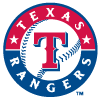 Kole Calhoun, OF, Rangers: Did you give a second thought to a 34-year-old outfield coming off a season in which he hit .235/.297/.373 during draft season? I can't say I did, and neither did most people, judging by his NFBC average draft position of 557. Calhoun hasn't been particularly consistent in the latter part of his career, but he's scattered some very solid seasons across his 11 years in the big leagues, and it looks as though we may have written him off too quickly. Through 38 games, he's hitting a lopsided but productive .243/.290/.443, good for a 115 wRC+, while homering six times. The way he's gotten there has been unusual. Similar to the 2021 version of Joey Votto, his plate discipline has taken a step back, as both his 27.4 percent strikeout rate and 4.8 percent walk rate represent career worsts, but that seems to be an intentional sacrifice in order to sell out for more power. That appears to be working, as his 14.6 percent barrel rate and 48.8 percent hard hit rate are both personal Statcast-era bests, putting him back on the map as a cheap source of power in deeper leagues.
Kole Calhoun, OF, Rangers: Did you give a second thought to a 34-year-old outfield coming off a season in which he hit .235/.297/.373 during draft season? I can't say I did, and neither did most people, judging by his NFBC average draft position of 557. Calhoun hasn't been particularly consistent in the latter part of his career, but he's scattered some very solid seasons across his 11 years in the big leagues, and it looks as though we may have written him off too quickly. Through 38 games, he's hitting a lopsided but productive .243/.290/.443, good for a 115 wRC+, while homering six times. The way he's gotten there has been unusual. Similar to the 2021 version of Joey Votto, his plate discipline has taken a step back, as both his 27.4 percent strikeout rate and 4.8 percent walk rate represent career worsts, but that seems to be an intentional sacrifice in order to sell out for more power. That appears to be working, as his 14.6 percent barrel rate and 48.8 percent hard hit rate are both personal Statcast-era bests, putting him back on the map as a cheap source of power in deeper leagues.
FALLERS
 Aroldis Chapman, RP, Yankees: As alluded to above, we seem to be dangerously close to the end of Chapman's time as an elite closer, if it hasn't ended already. He actually didn't give up a single run in his first 12 outings of the season, but his 11:7 K:BB in 10.1 innings over that stretch foreshadowed the troubles that were about to come. He's now given up runs in five straight appearances, sending his ERA up to 3.86, a mark, which doesn't reflect the extent of his struggles according to a 4.95 FIP and 4.87 xFIP. He's struck out just 22.7 percent of opposing batters this season, a shockingly low mark for a pitcher who posted a 39.9 percent strikeout rate last season and carried a 41.1 percent career mark heading into the year. Those elite strikeout totals had previously masked his control issues, but his reduced whiffs this year can't hide his 15.2 percent walk rate. He's reportedly receiving treatment for an Achilles injury, which could partially explain his slump, but it's hard to have much faith in him at the moment.
Aroldis Chapman, RP, Yankees: As alluded to above, we seem to be dangerously close to the end of Chapman's time as an elite closer, if it hasn't ended already. He actually didn't give up a single run in his first 12 outings of the season, but his 11:7 K:BB in 10.1 innings over that stretch foreshadowed the troubles that were about to come. He's now given up runs in five straight appearances, sending his ERA up to 3.86, a mark, which doesn't reflect the extent of his struggles according to a 4.95 FIP and 4.87 xFIP. He's struck out just 22.7 percent of opposing batters this season, a shockingly low mark for a pitcher who posted a 39.9 percent strikeout rate last season and carried a 41.1 percent career mark heading into the year. Those elite strikeout totals had previously masked his control issues, but his reduced whiffs this year can't hide his 15.2 percent walk rate. He's reportedly receiving treatment for an Achilles injury, which could partially explain his slump, but it's hard to have much faith in him at the moment.
 Jake Cronenworth, 1B/2B/SS, Padres: I noted two weeks ago while discussing Trent Grisham that players who do a little bit of everything can look particularly useless during slumps, as they lack a carrying tool to lean on. Grisham's teammate Cronenworth fits into that same category. Heading into this year, he'd hit .271 while hitting 18 homers and stealing five bases per 600 plate appearances, a useful enough player but one whose main value came from playing competently everyday while being eligible at three different positions. That everyday role remains there, as Cronenworth has sat just once this season, but his performance has tailed off, particularly in May. His .215/.344/.367 line in April was below his usual standards, but his .200/.253/.307 line in May is particularly poor. His strikeout rate has jumped from 16.7 percent to 27.1 percent, while his walk rate has plummeted from 14.6 percent to 4.7 percent. He should eventually pull himself out of the slump and perform close to his career marks, but he's not offering much of anything until that happens.
Jake Cronenworth, 1B/2B/SS, Padres: I noted two weeks ago while discussing Trent Grisham that players who do a little bit of everything can look particularly useless during slumps, as they lack a carrying tool to lean on. Grisham's teammate Cronenworth fits into that same category. Heading into this year, he'd hit .271 while hitting 18 homers and stealing five bases per 600 plate appearances, a useful enough player but one whose main value came from playing competently everyday while being eligible at three different positions. That everyday role remains there, as Cronenworth has sat just once this season, but his performance has tailed off, particularly in May. His .215/.344/.367 line in April was below his usual standards, but his .200/.253/.307 line in May is particularly poor. His strikeout rate has jumped from 16.7 percent to 27.1 percent, while his walk rate has plummeted from 14.6 percent to 4.7 percent. He should eventually pull himself out of the slump and perform close to his career marks, but he's not offering much of anything until that happens.
 Seiya Suzuki, OF, Cubs: I featured Suzuki as the top riser in my second barometer of the regular season, though I included the following caveat: "Exactly where his numbers settle once teams get more of a book on him remains to be seen." He was hitting a remarkable .400/.543/.960 when that piece was published, just nine games into the season, and while it was obvious he'd fall off, it was unclear just how much. Since that point, he's hit just .208/.279/.317 in 28 games, striking out 32.4 percent of the time. His 7.7 percent barrel rate over that stretch remains acceptable, but this is now a fairly extended run in which he hasn't made much contact, so it's safe to worry about his batting average going forward. To be fair to him, the projection systems over at FanGraphs are either slightly up or neutral on him compared to where they were before his debut, as his brief hot streak at the start of the year does still count, but it now looks like his path to success may be as a low-contact slugger rather than as an above-average all-around bat.
Seiya Suzuki, OF, Cubs: I featured Suzuki as the top riser in my second barometer of the regular season, though I included the following caveat: "Exactly where his numbers settle once teams get more of a book on him remains to be seen." He was hitting a remarkable .400/.543/.960 when that piece was published, just nine games into the season, and while it was obvious he'd fall off, it was unclear just how much. Since that point, he's hit just .208/.279/.317 in 28 games, striking out 32.4 percent of the time. His 7.7 percent barrel rate over that stretch remains acceptable, but this is now a fairly extended run in which he hasn't made much contact, so it's safe to worry about his batting average going forward. To be fair to him, the projection systems over at FanGraphs are either slightly up or neutral on him compared to where they were before his debut, as his brief hot streak at the start of the year does still count, but it now looks like his path to success may be as a low-contact slugger rather than as an above-average all-around bat.
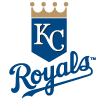 Carlos Hernandez, SP, Royals: Hernandez had his fans as a sleeper starting pitching option during draft season, though I can't say I really understood why. He did post a 3.55 ERA in 11 starts last year, but that wasn't supported by his underlying numbers, as he owned a 4.47 FIP and 5.42 xFIP while striking out just 15.8 percent of opposing batters while walking 10.8 percent. All those marks look great compared to how he performed through seven starts this season before being optioned to Triple-A Omaha on Friday, however. His ERA didn't just rise to meet his ERA estimators, it soared all the way up to 9.10, including a 13.89 mark in his final three outings before his demotion. On the season as a whole, he struck out just 10.7 percent of opposing batters while walking 13.4 percent. It's certainly possible he sorts things out in the minors and is up again before too long, but I see no reason to hold onto him and little reason to pick him up again once he returns.
Carlos Hernandez, SP, Royals: Hernandez had his fans as a sleeper starting pitching option during draft season, though I can't say I really understood why. He did post a 3.55 ERA in 11 starts last year, but that wasn't supported by his underlying numbers, as he owned a 4.47 FIP and 5.42 xFIP while striking out just 15.8 percent of opposing batters while walking 10.8 percent. All those marks look great compared to how he performed through seven starts this season before being optioned to Triple-A Omaha on Friday, however. His ERA didn't just rise to meet his ERA estimators, it soared all the way up to 9.10, including a 13.89 mark in his final three outings before his demotion. On the season as a whole, he struck out just 10.7 percent of opposing batters while walking 13.4 percent. It's certainly possible he sorts things out in the minors and is up again before too long, but I see no reason to hold onto him and little reason to pick him up again once he returns.


















